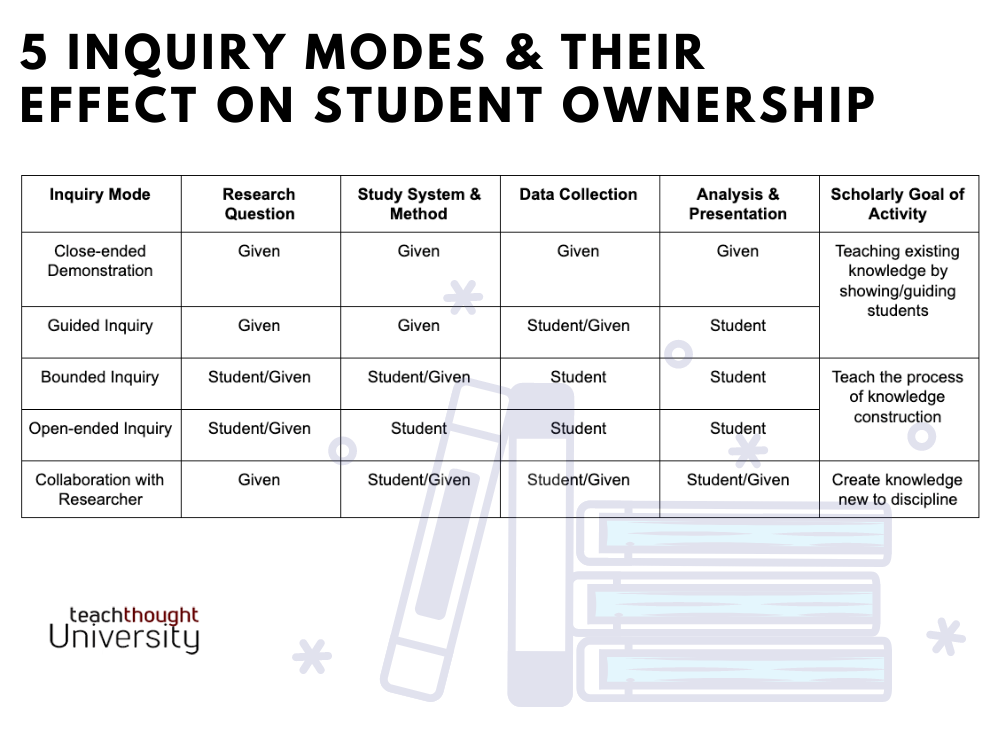
5 Inquiry Modes & Their Effect On Student Ownership
Student ownership is the degree to which a learner feels a natural sense of responsibility and curiosity about their work.
In contrast with simple compliance, or vague engagement, ownership implies something broader and more cohesive–a tone of interaction between a student and their work that is meaningful and enduring–something bigger than the assignment itself.
The above framework from Sundberg & Moncada (1994), Ohlhorst (1995), D’Avanzo (1996), and Grant & Vatnick (1998) takes this idea of ownership and applies it to inquiry-based learning. The result is a kind of spectrum analyzing the nature of teaching inquiry, moving close-ended demonstration to open-ended inquiry and even collaboration with the researchers themselves.
And maybe more usefully, the framework illustrates how different approaches to learning have different purposes, tactics, and ‘controllers.’
What Are The Different Kinds Of Inquiry?
At the top of the chart, most of the components of inquiry-learning–the questions, research system, data collection methods, and forms of presentation and publishing–are all given by the teacher to the student. As students increasingly take on ownership in pursuit of more open-ended inquiry, less is given by the teacher and is instead ‘owned’ and provided by the students.
Inquiry Mode: Close-ended Demonstration
Inquiry Mode: Guided Inquiry
Inquiry Mode: Bounded Inquiry
Inquiry Mode: Open-ended Inquiry
Inquiry Mode: Collaboration with Researcher
Applying Inquiry In Your Classroom
It’d be easy to mistake this as ‘for’ high-level research at the late high school and college level. Still, the general spirit parallels the general release of responsibility model, or the concept of scaffolding, where students are given much, then less, then only as much as they need.
It also helpfully itemizes the purpose of learning in different domains–developing a skill versus contributing knowledge to a given discipline.
In that way, at its most supporting and restrictive (top, left), students participate in close-ended inquiry with components supplied by the teacher. In a less supportive and the least restrictive approach, students are taught the process of knowledge construction rather than content (bottom right) or even connect directly with content experts and researchers themselves.
So, what is the takeaway for the way you think about your units and how students interact with the content in your classroom? Is this new? How you’ve always approached inquiry? A way to differentiate across the range of student readiness?
An Inquiry Framework: Levels Of Student Ownership
